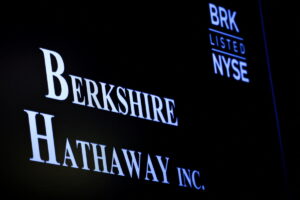Berkshire Hathaway’s Workforce Restructuring Amid Record Profits
Berkshire Hathaway, the vast conglomerate helmed by Warren Buffett, has recently revealed a substantial reduction in its workforce, shedding over 4,000 jobs in the past year. This move may seem counterintuitive, given the company’s projected record annual operating profit. However, it’s a striking reminder of how adaptability and strategic decision-making are crucial in today’s dynamic market.
In a regulatory filing, Berkshire disclosed that its total workforce now stands at approximately 392,000 employees, a decrease from 396,440 recorded in its latest annual report. Although the filing did not specify which subsidiaries undertook the layoffs, it highlights a broader trend of job cuts occurring across diverse sectors within Berkshire’s vast portfolio.
Understanding the Layoff Landscape
Berkshire Hathaway’s strategy focuses on acquiring and nurturing strong businesses – firms that have the potential to provide steady returns over the long haul. Nevertheless, even the most stable and eminent companies, such as Geico, BNSF railroad, and Precision Castparts, must occasionally recalibrate their workforce to align with shifting market demands and operational priorities.
For example, Geico recently made headlines by axing 7,700 positions as it struggled with underwriting losses, a direct reflection of adjustments needed in the face of challenging market conditions. Similarly, Precision Castparts slashed 13,400 jobs during the pandemic, a necessary step taken to combat a sharp decline in demand for aircraft parts. Most recently, Pilot, another Berkshire subsidiary, closed its international oil trading business and streamlined its leadership to refocus on its primary operations of truck stops and service stations.
Record Profits amidst Job Cuts
Despite these layoffs, Berkshire Hathaway is on track to report a staggering $37.35 billion in operating profit for 2023, with a further $32.91 billion of operating profit logged in just the first nine months of 2024. This resilience underscores a critical point: profitability does not always equate to expanding the workforce. Business leaders must continuously evaluate performance and reallocate resources to maximize growth.
With Buffett at the helm since 1965, the ethos of the Omaha-based company emphasizes a decentralized approach, allowing managers of its subsidiaries autonomy in decision-making. This hands-off philosophy can sometimes lead to difficult decisions—none more so than the ones impacting livelihoods.
Conclusion: Strategic Adaptability is Key
As we look ahead, Berkshire Hathaway’s recent example serves as a potent reminder that strategic workforce adjustments are an intrinsic part of business operations, especially in times of economic uncertainty. For investors, understanding these dynamics is crucial. It’s not just about numbers; it’s about recognizing the strategies behind them that shape long-term value creation.
This approach not only solidifies the company’s future but also reassures stakeholders that even in challenging times, essential business adaptations pave the way for sustainable success. Remember, a thriving business must balance its workforce against the need for profitability, innovation, and market responsiveness—a delicate act that can determine its longevity in an ever-evolving landscape.

